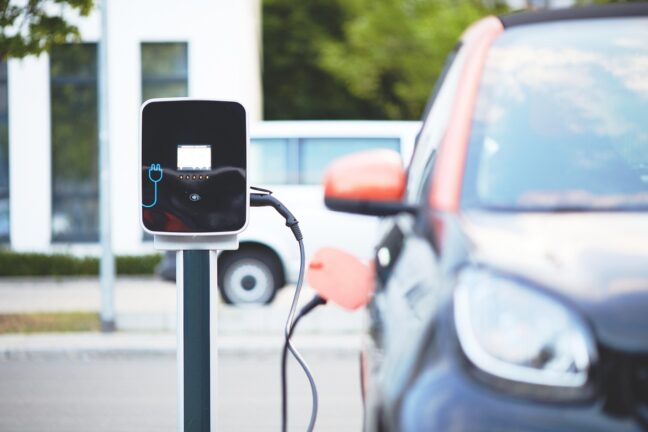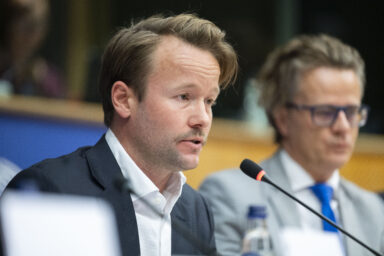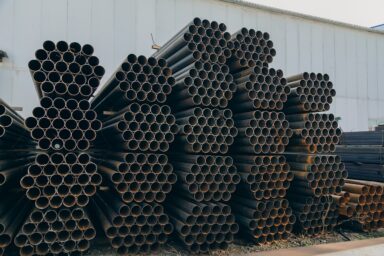Europe’s electric-vehicle conundrum has solutions, but blunt tools will not find them. Experts from the Brussels-based think-tank Bruegel warn against painting the policy-decisions map with too broad brushstrokes.
Europe wants electric cars to replace petrol engines. But its carmakers are struggling: they build the vehicles too expensively, and lack enough batteries. Filling the gap are Chinese companies, whose cheaper models now make up 25 per cent of EU electric-car sales. They also invest heavily in Europe’s battery factories and supply chain.
This Chinese cash creates a dilemma. It boosts jobs and speeds up green goals – yet risks loom. First, subsidised Chinese rivals could warp markets. Second, the foreign control of data and digital systems might threaten Europe’s security. And even if no malevolence is directly involved, reliance on Chinese minerals or tech could backfire in a time of crisis. What to do?
The Brussels-based think-tank Bruegel has come up with ideas in an attempt to show European policymakers a way out of the woods. Authors Simone Tagliapietra, Senior Fellow at Bruegel; Cecilia Trasi, Research Analyst at Bruegel; and Gregor Sebastian, Senior Analyst with Rhodium Group’s China Corporate Advisory teamed up to tackle the web of interconnected issues against the backdrop of European Union’s regulatory jungle to issue a policy brief.
You might be interested
The paper came out in early July under the title A smart European strategy for electric vehicle investment from China. In an age which appears to favour knee-jerk responses to equally impulsive policy decisions, it argues for carefully calibrated moves instead.
Bargaining power sapped
The European Commission has slapped tariffs on Chinese electric cars and beefed up trade defences. But EU states are still clashing over how to handle Chinese investors. Some welcome the money; others fear dependency. This disunity weakens Europe’s bargaining power, the authors write.
European carmakers, by and large, see EVs as a necessity. Former Stellantis CEO Carlos Tavares says that, “Whether I like it or not, with me or without me, Leapmotor would have been in Europe anyway, ” referring to one of China’s EV brands.
Europe must chart a middle path. It should not shun Chinese capital nor let it flow unchecked. Instead, it should use access to its prized market as leverage. The goal? To make Chinese investment align with EU climate targets, industrial plans and security needs.
Europe’s dilemma
The bloc faces a paradox. It needs foreign tech to go green but cannot let that deepen strategic reliance. Chinese cash is neither good nor bad by default; outcomes hinge on Europe’s rules.
Road transport produces over half the EU’s transport emissions. The sector contributes 29 per cent of the bloc’s greenhouse gases. Unlike power or heavy industry, its emissions refuse to fall. Electric cars are vital. But Europe’s carmakers are lagging. Their electric models cost over €50k on average. Few sell below €30k. High prices and patchy charging networks slow uptake, especially for middle-income buyers.
Chinese firms are filling the gap. With state backing and integrated supply chains, brands like BYD sell cheaper cars. By 2024, one in four electric vehicles sold in the EU was Chinese. These average €32k – a challenge for European firms.
Tariffs and investments
Pressure is growing as European exports to China shrink. Local Chinese production is replacing imports. Meanwhile, American tariffs under President Trump are disrupting EU car exports. Chinese investment in Europe’s electric-vehicle sector is surging. It is bringing in jobs and scaling up production. But risks include subsidised competition, data vulnerabilities and long-term dependency.
Whether I like it or not, with me or without me, Leapmotor would have been in Europe anyway. – Carlos Tavares, ex-CEO of Stellantis
The EU has responded with tariffs on Chinese cars and an industrial plan under the Clean Industrial Deal. Yet member states are clashing over Chinese investment. Some welcome it; others fear strategic harm. Fragmented policies are weakening Europe’s leverage.
Chinese greenfield investment in Europe’s electric-vehicle sector hit €5bn in 2024, up 50 per cent from 2022. It now spans the supply chain, from battery materials to assembly. CATL’s €7.3bn plant in Hungary and Envision’s €2bn site in France are key projects. Most value stays upstream. Initial phases rely on imported equipment. Later stages use more local suppliers.
Homeward bound
Europe aims to make 90 per cent of its batteries domestically by 2030. Current capacity falls short. Chinese firms build faster than EU-backed projects like Verkor, which face delays. Northvolt, once a European battery champion, went bankrupt in 2024.
Chinese investment could revive regions reliant on combustion-engine parts. CATL’s Hungary plant may create 9,000 jobs. Spain’s idle Nissan factory could reopen under Chery. But benefits depend on local hiring and supplier links. Without these, investment may not boost resilience.
Chinese firms lead in cost-cutting and scale. Their presence could spur European innovation. But competition must be balanced. Tesla’s success shows new entrants can accelerate change. Joint ventures and R&D partnerships may help. Yet assembly-only projects bring few spillovers.
The data challenge
Risks loom. China controls key raw materials, and export curbs could disrupt supply. Deeper ties with Chinese firms may complicate EU access to US markets. Subsidies give Chinese firms an edge. State support averages 4.5 per cent of revenues – six times the OECD norm. EU duties on Chinese cars aim to counter this.
Electric vehicles collect sensitive data. Chinese laws let authorities access data from firms, even abroad. Charging systems with Chinese tech could be cyber targets. Lithuania has banned remote access to Chinese power systems. Similar fears apply to EVs.
Dependency risks trapping Europe in low-value assembly. Foreign car plants often operate as enclaves. Czechia and Hungary rely on low-skill roles despite foreign investment. R&D centres may lack real innovation.
EU states are split on China. Hungary courts investment with tax breaks. Spain and France offer grants. Sweden imposes stricter rules. After EU tariffs, China paused investments in some states. Leapmotor shifted production to Spain, which abstained in the tariff vote.
Unfair state aid
The EU lacks centralised investment screening. Most states focus on national security, not economic impact. A proposed EU framework faces resistance as member states tend to guard their sovereignty jealously.
Tools exist, though. The Foreign Subsidies Regulation tackles unfair state aid. The EU can extend tariffs to parts if Chinese content exceeds 60 per cent. Fleet rules may link subsidies to sustainability. On the other hand, any ‘Buy European‘ measures risk WTO disputes.
Corporate fleets drive 60 per cent of EU car sales. New rules could tie procurement to supply-chain resilience. This may diversify sources and cut emissions. Yet firms need clearer standards on ownership and R&D.
Openness and control
Europe must balance openness with control. Chinese investment offers short-term gains but long-term risks. The bloc needs unity to steer capital toward its climate and security goals. Without it, fragmentation will persist – and so will the threats.
Brussels must enforce existing laws on data storage, cybersecurity and anti-dumping. It should also stop states undercutting each other with rival subsidies. Harmonised incentives – from car-buyer grants to corporate fleets – could steer investment toward sustainability and fair labour practices.
Time is tight. Europe’s car giants risk losing market share as Chinese brands expand. Yet blocking China entirely would slow the green transition. The solution lies in using the single market’s clout to set terms – not build walls.
The Bruegel paper ends with a set of recommended actions for European decision makers.
Policy recommendations
The EU should use single-market access to balance openness, competitiveness, and security. And apply existing tools to integrate Chinese firms under fair terms.
Demand-side measures
– embed sustainability/resilience criteria in corporate fleet laws (2025-26)
– link EV subsidies to non-price factors. Guide states via funding conditions
– monitor Chinese imports (including via third countries) for subsidies; impose tariffs if needed.
Condition EU funding on:
– input diversification (e.g., hydrogen auction’s 25 per cent China cap)
– local workforce training and R&D commitments
– participation in EU innovation partnerships.
Cybersecurity/data
– strictly enforce GDPR with heavy penalties
– use the NIS2 Directive for dynamic risk assessments
– safeguard EV charging/data systems. Ensure EU operational control
Tackling distortions
– clarify rules set by Foreign Subsidies Regulation (FSR, Regulation (EU) 2022/2560) for greenfield EV projects by 2026. Set intervention thresholds
– avoid blunt FSR penalties. Redirect subsidies to EU R&D. Push local sourcing.
Coordination
– align states on China EV import pricing. Ensure deals complement safeguards.










